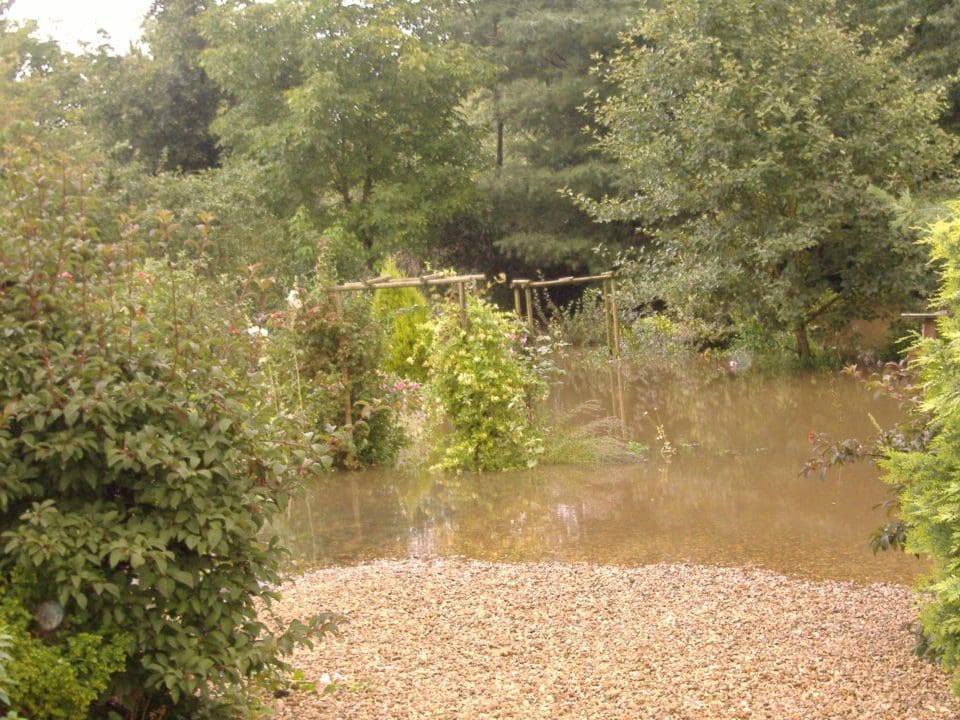Gardeners need to adapt their gardening practices to cope with changing weather conditions caused by climate change, says a national organic gardening charity.
Garden Organic, the charity helping gardeners grow in a more environmentally sustainable way, is sharing essential tips on cultivating weather-hardy gardens so gardeners can prepare and protect their growing spaces from flooding.
Winters are notably seeing increased rainfall, with the winter of 2020 being in the top five wettest winters on record. In 2021 and 2022, the UK experienced extreme deluges of rain – often coming after periods of drought when the soil was hard and more prone to run-off.
Although extreme weather can be localised, Yorkshire, Leicestershire, Suffolk and Kent have all suffered severe weather events. Bethersden in Kent recorded a daily total of 102mm of water, including 59mm falling in just one hour in June 2021.
“Prolonged periods of rain, where the soil is saturated for an extended period, creates the most problems,” says Garden Organic’s head gardener Emma O’Neill. “This is usually more common on poorly drained or heavy soils that have become compacted, which is why good soil care is essential.
“But you can recover. The best solution is to invest in your soil and get the right plants in the right place now. Learn from your garden and observe how water flows – and have plenty of places it can be collected, such as green roofs or water butts.”

Here’s Emma’s top tips for reducing the damage done by flooding…
Before garden flooding
- The best solution to flooding is improving your soil structure. Don’t leave large areas of soil bare. In autumn and spring, use mulches of homemade compost. In the summer and autumn, sow green manures. These methods protect the soil by retaining nutrients and improving absorbency.
- Find ways to collect water in your garden. Create ponds and living green roofs with sedums and grasses, and install plenty of water butts with downpipes from roofs. Raised beds allow plants to sit in more free-draining topsoil. You could also incorporate swales or shallow ditches into your garden boundaries, which will guide excess water away.
- Choose permeable materials like stone, gravel or brick for paths and patios. This will allow some water to soak in, instead of standing on watertight materials like concrete. And if you live in a place that is continually flooded, then consider a rain garden, which captures water and is filled with plants that can withstand some waterlogging. These might include yellow iris, pendulous sedge, arum lily, grasses or shrubs such as Cornus. Work with your location and the changing climate, not against it.
- Think ahead bytaking cuttings from any perennials that may be vulnerable to waterlogging and root damage.
During garden flooding
- To prevent extreme flooding, use sandbags to direct the water away from vulnerable areas like polytunnels or greenhouses.
- If you don’t have a water butt, arrange buckets on patios and drives to capture water and limit flooding in surrounding flower beds.
- Watch where the water is running from and to. This can help you be better prepared next time.
After garden flooding

- Set down planks or boards to avoid walking over waterlogged ground that will compact the soil even more and push out air.
- Even if you’re well-prepared, flash flooding can overwhelm a garden and any drainage systems. Help water drain by forking the ground around existing shrubs and trees, enabling excess water to go deeper into the ground.
- If there has been severe damage, give plants organic feed to help bring plants back to health once the soil is no longer waterlogged.
Gardeners interested in receiving organic advice and updates can become a member of Garden Organic or visit the new Garden Organic website at gardenorganic.org.uk.
Picture credit: Sally Cunningham











